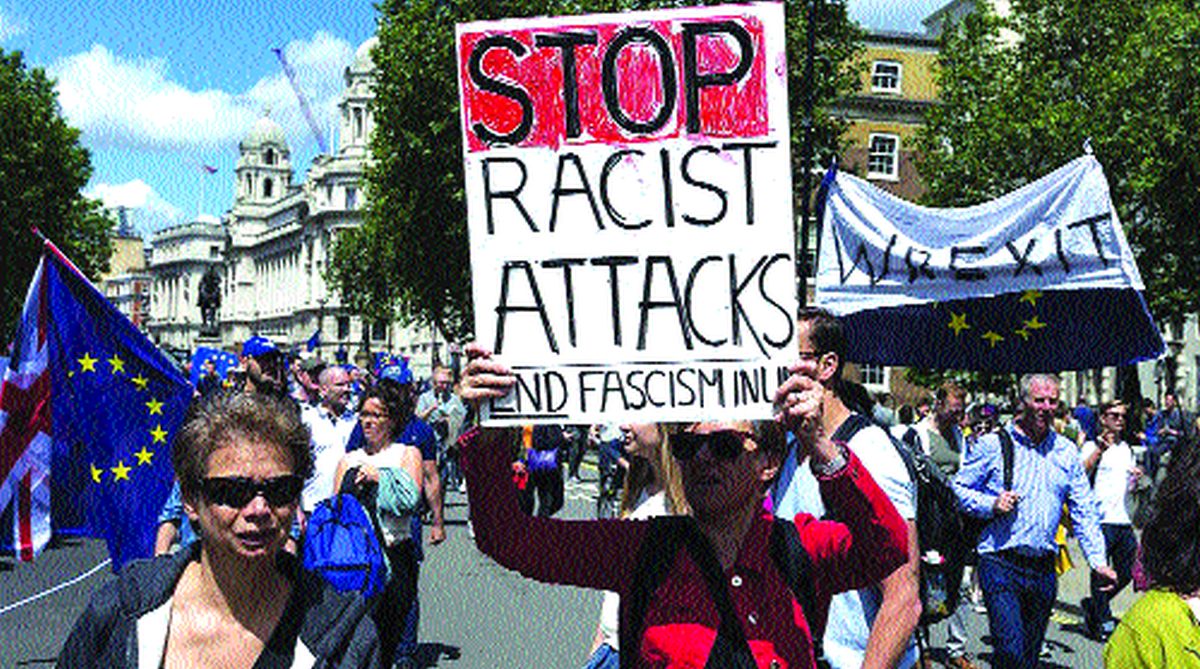“If you’re black, you’re treated more harshly by the criminal justice system than if you’re white.”
Those were the words of Theresa May as she stood outside Downing Street in her first speech as prime minister. It was a somewhat surprising acknowledgment from the leader of a party which is not exactly renowned for its record on racial equality.
Advertisement
And yet, just as the former home secretary’s 2017 campaign mantra of a “strong and stable government” is becoming more and more comical with hindsight, her earlier promise to “build a better Britain” for everyone, regardless of their background, is also proving to be little more than lip service. Any ounce of blind faith in the Conservative party’s dedication to helping black Britons was quickly dissolved by the Windrush scandal.
While the black British population has long been aware of its subordinate status in the eyes of institutions – the justice system in particular – the statistics released this week are no less harrowing.
According to an investigation conducted by The Independent, which analysed figures from 2009-2017, one in four black teenage boys convicted of homicide were handed maximum jail sentences. Not one white teenager was sentenced to more than 10 years.
And that’s because the majority of black teenagers found guilty of homicide are convicted of murder (for which the result is often life in prison), while their white peers are more likely to be convicted of the lesser crime of manslaughter.
As Labour MP David Lammy, who last year released his government review of racism in the criminal justice system, outlined, the disparity in sentencing partly boils down to a deeply entrenched mistrust of the system among young black men. A sense of scepticism that, understandably, makes them less likely to believe that pleading guilty will actually result in a shorter sentence.
But is this any surprise? In her groundbreaking bestseller Why I’m No Longer Talking to White People About Race, journalist and activist Reni Eddo-Lodge broke down a number of factors that explain the strained relationship between black men and the police.
There’s of course the famous case of Stephen Lawrence, the black teenager whose racially-motivated murder in 1993 (and the subsequent police fudge-up of the case) led to the confirmation of institutional racism within the British police through the Macpherson Inquiry. Or let’s consider the fact that, according to a 2013 report, despite black people being less likely to use drugs than white people, they are twice as likely to be charged with drug possession.
In fact, the statistics that justify young black men’s suspicions are myriad. Black people are eight times more likely to be stopped and searched by police officers than white people. The Met Police are four times more likely to use force with black people than white people.
Those who find themselves in court hoping to meet a judge who might relate to their case will be disappointed to learn that as recently as 2015, only 7 per cent of judges were from black or minority ethnic backgrounds. And while black people are significantly underrepresented in the media, academia and politics, they make up a disproportionately large segment of the UK prison population.
The figures speak volumes, but for most black men who come into contact with the justice system, it’s the individual cases and day-to-day stories that really cement these suspicions. It’s the case of Mark Duggan whose “lawful killing” by the police still raises questions today. It’s the stories of black men like Sean Rigg, killed in police custody. Or Jack Chambers, a young black man who was told by a police officer in Coventry that “you’d be the first one I’d shoot”.
Compare white Oxford medical student Lavinia Woodward, who was handed a negligible jail sentence for stabbing her boyfriend and described as “an extraordinarily able young woman”, with black Cambridge graduate and spoken-word artist George the Poet, who was randomly strip-searched by police in June this year for no apparent reason.
At my university in London, I knew of several white peers who were caught with drugs by police and received a mere warning. Meanwhile, black male students often reported being stopped at the gates and interrogated. The perception of black people, and black men in particular, as innately criminal is rife, and the findings of David Lammy and The Independent are simply a reflection of that.
These studies are essential: proof that those who accuse the justice system of being institutionally racist are not just crying wolf. However, it’s these deep-seated stereotypes, which play a direct part in holding black men back – and keeping them behind bars – that need tackling first and foremost.
Sadly, undoing centuries of profiling will require far more heavy lifting than reviews or white papers, many of which confirm what the black community already know.
The Independent











